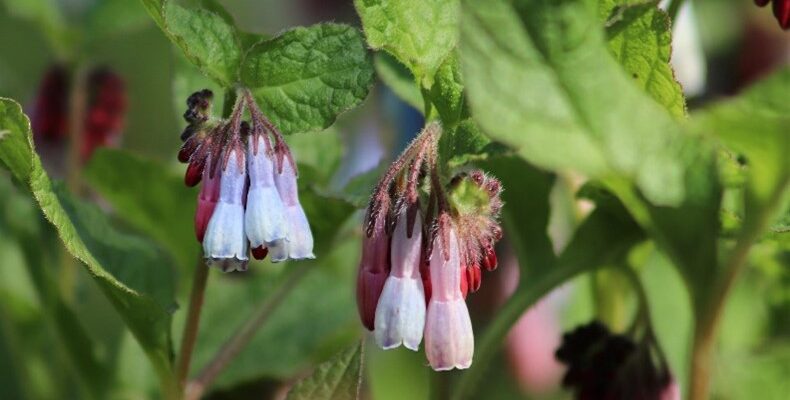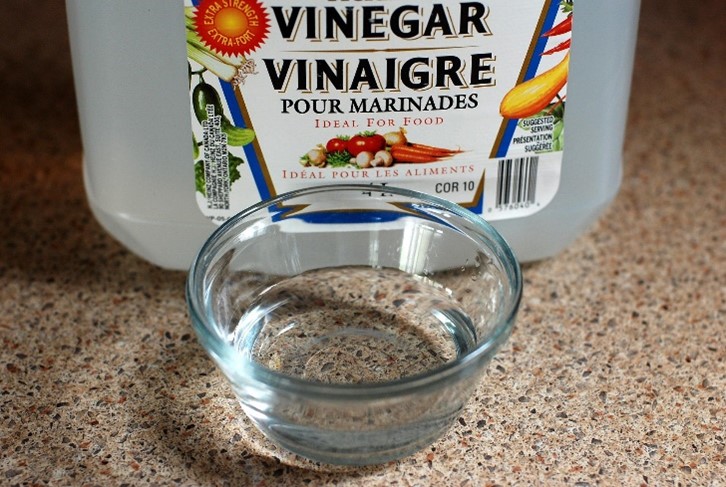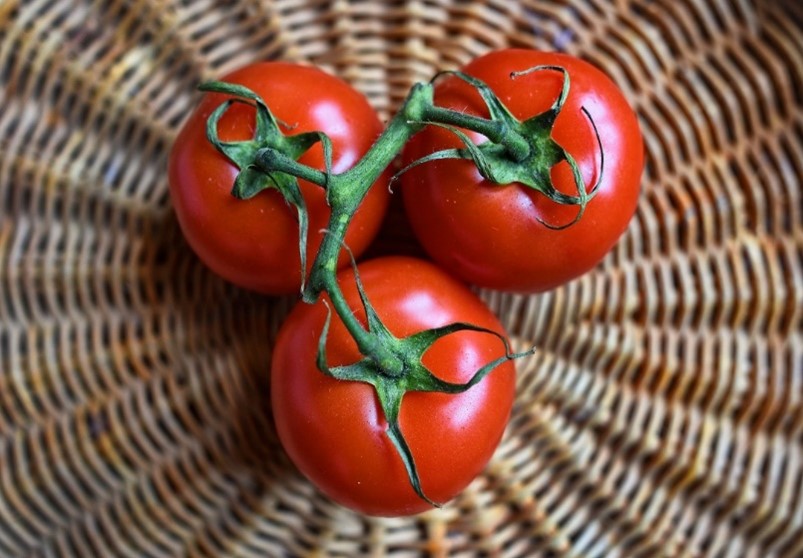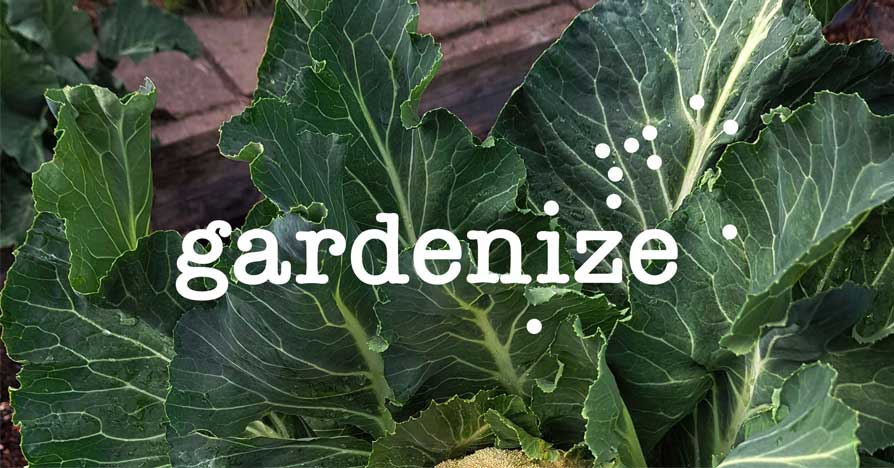Saving money in the Garden
Walk into most garden centres and you’re likely to come to the conclusion that gardening is a very expensive business. It’s true that you can’t get away from some expenditure if you want to grow things and have a nice garden, but you don’t necessarily have to pay garden centre prices for everything. There are several ways in which you can save money, ranging from making your own plant pots from toilet roll centres to saving your own seed, and all of these have benefits for the planet as well as for our own pocket.

Plants
Many of the plants in garden centres are sold in pots in full bloom. After all, people want to see what the flower of a plant looks like before they buy it. However, you’re paying for the time and care that has gone into getting the plant to that stage, whereas, if you buy smaller plants, or even start them from seed, it works out much cheaper. In the case of shrubs or roses it is also much cheaper to buy bare root during the time when the plants are dormant than to buy one in full growth in a pot. The plant also establishes better, as it’s not trying to put down roots and maintain top growth at the same time. The bare root season in the UK is usually between November and May, and there are many mail order companies that sell them.
Of course, if you’re after a particular variety of plant, you may have to go to a garden centre or specialist nursery and pay a little bit more. And it’s always useful to see what a plant looks like when it’s in flower.
In the case of herbaceous perennials, if you do buy a large plant, it is often easy to divide it and make several new plants from it. Perennials that can be divided include bergenias, hostas, geraniums, helianthus, Hemerocallis and lychnis. Garden centres often have a bargain area containing plants that have been reduced because they’re no longer looking their best. With a little care these can be brought back into shape, though, of course, you have to take potluck with what you’re buying.
Another way of increasing your stock is to buy plug plants from nurseries and to grow these on from early Spring. By the summer they should have grown significantly and be ready to plant out.
From seeds
Most annuals and many perennials can be grown from seed, especially if you can start them off under glass in late winter or early Spring. This also gives you the advantage of being able to grow some of the more unusual varieties that aren’t always on sale in garden centres. By saving your seed from previous years’ plants you can also save money. And, if you end up with too many plants, you can always swap them with friends or give them away or sell them on websites such as Gumtree or Freecycle. You can also take cuttings from your own or friends’ plants. The internet is full of advice on which cuttings you should take at different times of the year and the ways in which to do this.
If you want to propagate herbs from the ones that you buy in supermarkets, gently tease them apart and replant them. You will find that there are several small plants in each pot. And herbs like mint and basil can easily be rooted from a small stem placed in a glass of water.

Gardening Equipment
It’s worth investing in good quality garden tools, but you can often find these second hand at car boot sales or on websites such as Gumtree or Freecycle. It’s also worth looking after them, as they are less likely to need replacing if they are well taken care of.
Seeds can be sown into a number of different recycled containers, such as egg boxes, toilet roll centers, yogurt pots and fruit trays, so you don’t have to buy a lot of plants and seed trays.
And many garden centers allow customers to drop off unwanted plastic pots, which can be collected, free of charge, by other gardeners and re-used.
Many items can be upcycled to use as planters, such as tin cans, watering cans, tin baths, wooden boxes, kettles and even hessian sacks. Make sure to add drainage, either by drilling holes in the bottom or concealing a plastic pot within the container.
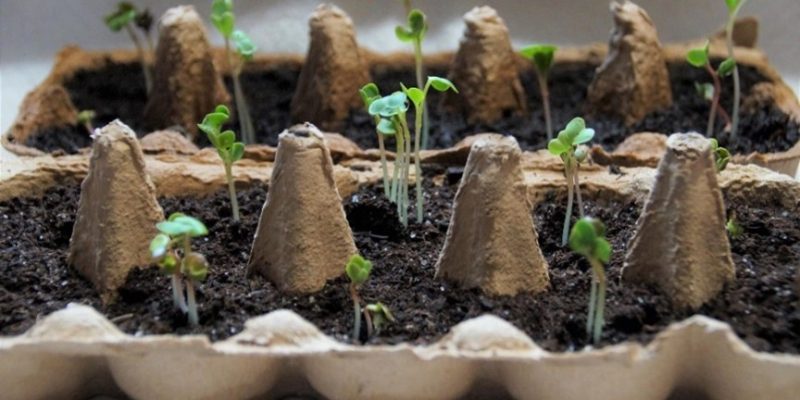
Plastic bottles can be used in a number of different money-saving ways. Cut in half, they can be used as temporary cloches over small plants. The end with the spout can be inserted into the soil and used to channel water to the roots of plants. Smaller bottles or yogurt cartons can be used as cane toppers and water bottles can be converted into plant waterers.
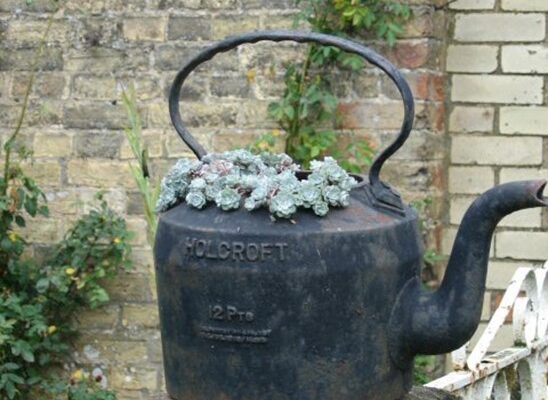
And, of course, having your own compost bin and water butts can save money in the garden by making use of rainwater to water plants and kitchen scraps and garden prunings to make compost to use as a mulch or fertiliser. If you can make your own compost bin out of old pallets (often obtainable for nothing), you’ll have saved even more money.
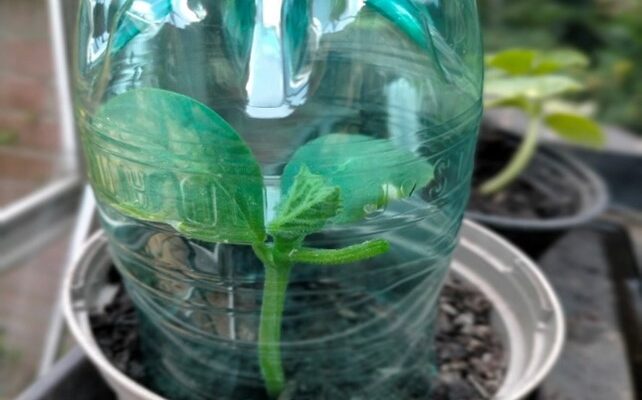
Fertilisers, bugs and weeds
You don’t have to spend a fortune on garden chemicals. For instance, there are many fertilisers that you can make yourself. If you can get access to comfrey, you can make comfrey tea which can be used as a liquid feed or (as some gardeners claim) as a foliar spray to prevent powdery mildew. Just soak the leaves in water and leave them to steep for a few weeks, then dilute the liquid at a ratio of 1:2 parts tea to water. Be warned: it stinks!
Comfrey tea is especially rich in potassium, making it ideal for promoting flowering and fruiting in a range of plants, including tomatoes.
Comfrey can also be added to compost bins to help speed up the composting process.
Other plants that can be used in a similar way include nettles and dandelions. Nettle tea is full of nitrogen and so good for leafy growth.
You could try using vinegar to kill weeds, especially by combining it with washing up liquid. The acetic acid in the vinegar sucks up the water from the weed, which dries it up, and the washing up liquid breaks down the outer coat of the weed which helps the vinegar to work. Mix a gallon of vinegar with an ounce of washing up liquid and pour into a spray bottle. However, bear in mind that vinegar weedkiller is non-selective, so be careful not to spray it on plants that you want to keep and apply on a sunny day when there is no wind. The vinegar may not kill all of the roots, so you may need to re-apply it.
Instead of buying pesticides, you could try companion planting. Nasturtiums planted under brassicas will attract cabbage white butterflies to lay their eggs on their leaves, rather than on the brassicas. They can also act as “sacrifice plants”, as they attract blackfly away from other plants. Plants like basil, mint, chives, garlic and rosemary will help to deter aphids.
Garlic can also be used to make a spray, which, particularly if used on roses, helps to create a barrier against black spot.
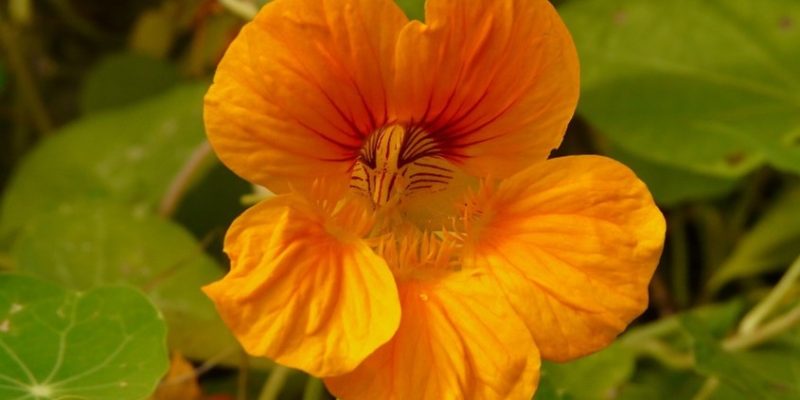
Gardening Advice
Finally, although gardening books are lovely to look through, there is no need to spend a fortune on them if you are looking for advice. There is plenty of advice online about saving money in the garden on websites such as Gardeners’ World or the RHS – or the Gardenize app, where you can also keep a record of any useful tips you find that help you to save money.
And, if you’ve any doubts about the benefits of gardening and ways of saving money, just remember the adage:
“Gardening is cheaper than therapy – and you get tomatoes!”

ABOUT THE AUTHOR
Caroline Bowman has been hooked on gardening ever since she grew some thyme from seed and planted it in a window box when she lived in a flat in London. Fifty years later she is still hooked on gardening, but now she lives in Lincolnshire in England where they have quite a big suburban garden as well as an allotment, where they grow fruit and vegetables. Caroline loves flowering plants, in particular, herbaceous perennials and she likes finding out about the more unusual varieties that will do well in the English climate and soil.
GARDENIZE GARDEN APP
A gardening friend with a green thumb and photographic memory
Gardenize is an app for gardening and cultivation that helps you to overview, understand and develop your garden and your gardening skills. Order makes it easier to succeed and Gardenize structures information and photos and makes it searchable for you. You also get tips and inspiration from other Gardenizers around the world. Gardenize is free to use and you can download Gardenize from the App Store or Google Play, or create an account for the Gardenize web app for web browsers.
Get to know Gardenize better here.



